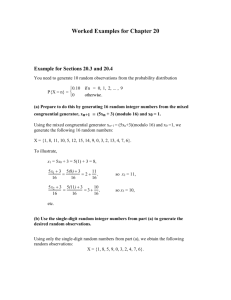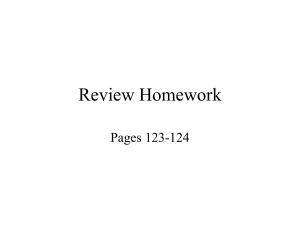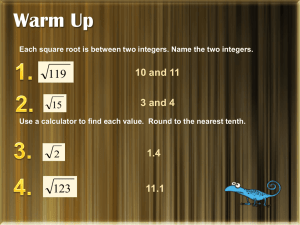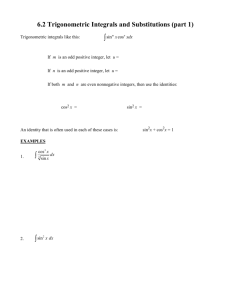Rational_and_Irrational_soln
advertisement
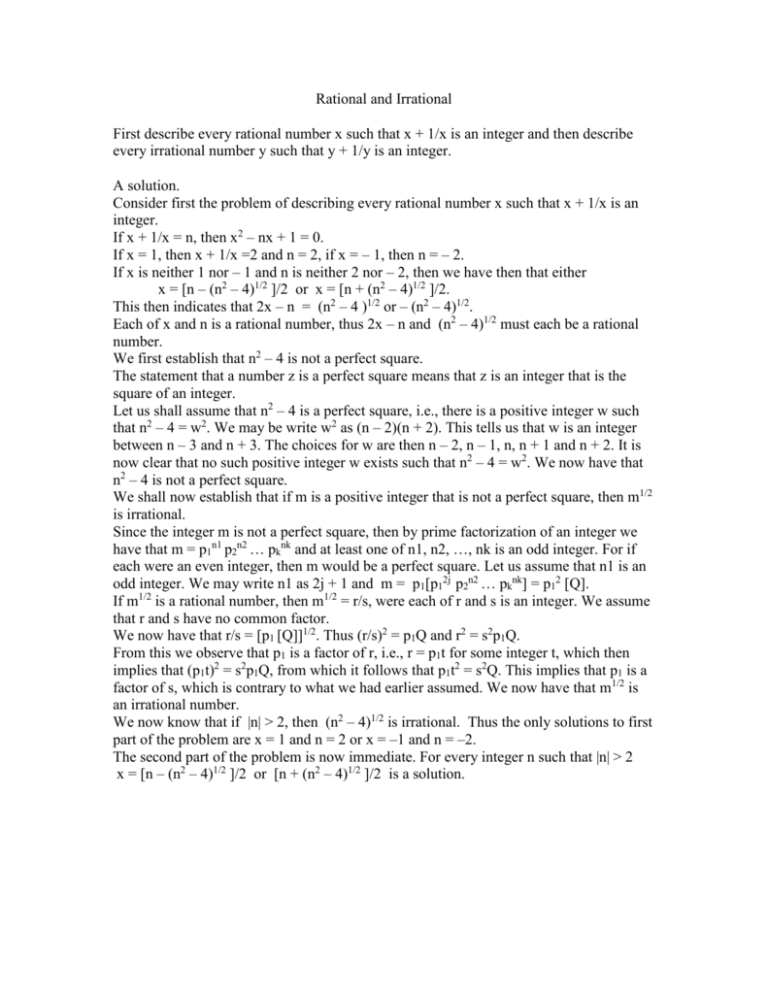
Rational and Irrational First describe every rational number x such that x + 1/x is an integer and then describe every irrational number y such that y + 1/y is an integer. A solution. Consider first the problem of describing every rational number x such that x + 1/x is an integer. If x + 1/x = n, then x2 – nx + 1 = 0. If x = 1, then x + 1/x =2 and n = 2, if x = – 1, then n = – 2. If x is neither 1 nor – 1 and n is neither 2 nor – 2, then we have then that either x = [n – (n2 – 4)1/2 ]/2 or x = [n + (n2 – 4)1/2 ]/2. This then indicates that 2x – n = (n2 – 4 )1/2 or – (n2 – 4)1/2. Each of x and n is a rational number, thus 2x – n and (n2 – 4)1/2 must each be a rational number. We first establish that n2 – 4 is not a perfect square. The statement that a number z is a perfect square means that z is an integer that is the square of an integer. Let us shall assume that n2 – 4 is a perfect square, i.e., there is a positive integer w such that n2 – 4 = w2. We may be write w2 as (n – 2)(n + 2). This tells us that w is an integer between n – 3 and n + 3. The choices for w are then n – 2, n – 1, n, n + 1 and n + 2. It is now clear that no such positive integer w exists such that n2 – 4 = w2. We now have that n2 – 4 is not a perfect square. We shall now establish that if m is a positive integer that is not a perfect square, then m1/2 is irrational. Since the integer m is not a perfect square, then by prime factorization of an integer we have that m = p1n1 p2n2 … pknk and at least one of n1, n2, …, nk is an odd integer. For if each were an even integer, then m would be a perfect square. Let us assume that n1 is an odd integer. We may write n1 as 2j + 1 and m = p1[p12j p2n2 … pknk] = p12 [Q]. If m1/2 is a rational number, then m1/2 = r/s, were each of r and s is an integer. We assume that r and s have no common factor. We now have that r/s = [p1 [Q]]1/2. Thus (r/s)2 = p1Q and r2 = s2p1Q. From this we observe that p1 is a factor of r, i.e., r = p1t for some integer t, which then implies that (p1t)2 = s2p1Q, from which it follows that p1t2 = s2Q. This implies that p1 is a factor of s, which is contrary to what we had earlier assumed. We now have that m1/2 is an irrational number. We now know that if |n| > 2, then (n2 – 4)1/2 is irrational. Thus the only solutions to first part of the problem are x = 1 and n = 2 or x = –1 and n = –2. The second part of the problem is now immediate. For every integer n such that |n| > 2 x = [n – (n2 – 4)1/2 ]/2 or [n + (n2 – 4)1/2 ]/2 is a solution.




